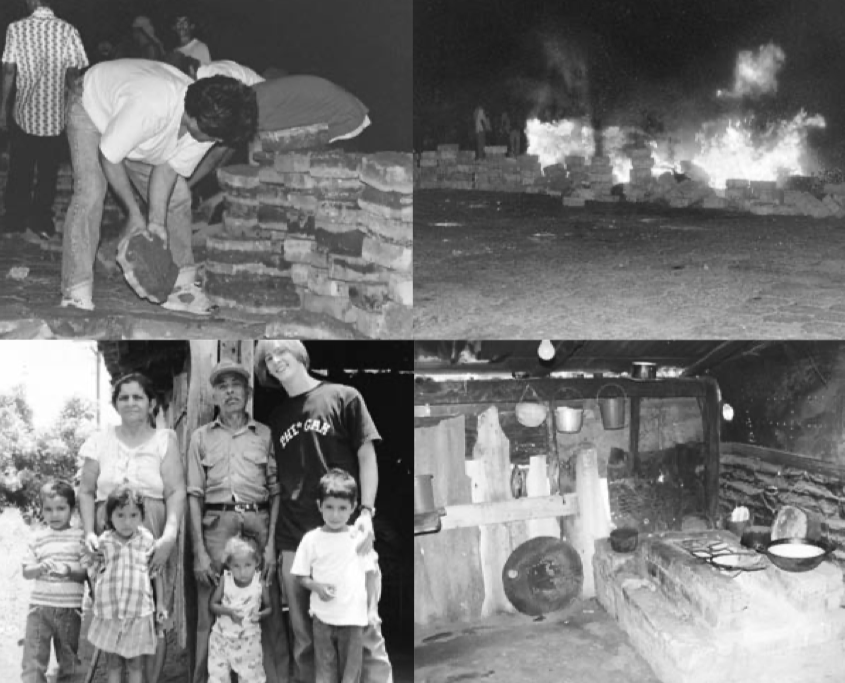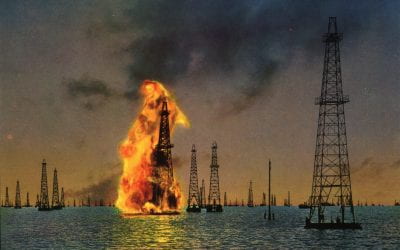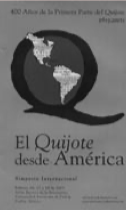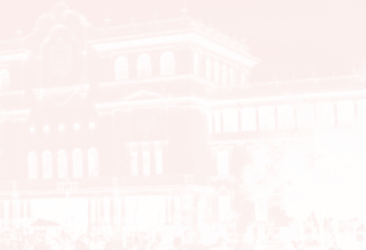Nicaragua and the United States
Troubled Neighbors

Two Nicaragua families on two political sides: above, Don Issac building a barrier; below, Lailado and his family
When I arrived in Nicaragua in 1997 to work on a grassroots environmental project, Managua was in chaos. Six thousand students were raging against spending cuts in education. President Arnoldo Alemán had placed new restrictions on funding for state universities. The city was paralyzed.
I was witnessing the latest chapter in Nicaragua’s violent history plagued by civil war, self-interested tyrannical rulers, and foreign political intervention. Due to this turbulent past, Nicaragua has struggled to achieve political stability or significant economic growth. Although only the last of a succession of foreign invaders, the United States has played a leading role in Nicaragua’s recent past. U.S. involvement began in 1909 when marines lent support to the new Conservative government and continued into the 1930s with U.S. interest in a trans-isthmus canal. Before the United States withdrew forces in 1933, it established and trained the Nicaraguan National Guard, and installed a commander sympathetic to U.S. anti-communist policy. The Somoza family would dominate Nicaraguan politics and industry for the next 43 years.
Even before independence, Nicaragua was divided between anti-clerical free-trading Liberals and Catholic conservatives. In the 1960s, the Frente Sandinista de Liberación Nacional (FSLN or Sandinistas), a leftist armed revolutionary force bent on overthrowing the pro-U.S. Somoza government, emerged, finally claiming victory in 1979. The rebels were visionaries, not statesmen. Sabotaged by some of their original supporters and besieged by counter-revolutionary forces covertly funded by the Reagan administration, their economic experiment persevered a scant eleven years. During my stay in Nicaragua, I lived with Sandinistas and Liberals; their lives and stories offered a personal insight into Nicaragua’s past.
I stayed in Managua with the family of Don Isaac. Forty-five at the time and a college janitor, he had spent five years guiding new recruits to mountain camps during the uprising against Somoza. He commandeered weapons and food in the mountains to feed Sandinista guerrillas. Some of the cattle he stole belonged to the poor farmer who would later host me in Momotombo, an agrarian village outside Managua where daily necessities were scarce. As a well-meaning undergraduate student from the world’s preeminent consumer society, I was going there to preach sustainable development. Getting there was going to take some time, however. Student blockades barred access to every major thoroughfare, suggestive of the barriers to higher education they were protesting.
During the week of riots, my Sandinista host family wrenched cobblestones from the streets and lighted gasoline drenched tires, pushing lung searing smoke into the night air. Students armed with morteros burned vehicles, while police in riot gear fired tear gas into the crowds. Students, journalists and police had been injured before the dissenters gave way when Alemán promised five percent of the state budget for education.
When the shooting stopped I continued on to Momotombo, an agrarian community where I lived in a tin hut with Señor Lailado and his family. Lailado was a seventy-plus liberal who waxes nostalgic about a time before the revolution when, as he remembers, food was cheap and everybody ate well. He had heard of the protests in Managua and told me the government needed to instill a healthy fear in the people to govern properly. Lailado has known fear. He remembers being dragged from his bed by guerrillas and forced to hand over the rifle he needed to put meat on the table. They took the rifle as they had taken the cattle.
I had come to like and respect the heads of both my host families, despite their opposite political ideologies. Listening to their stories I wondered how well I might have done under the same circumstances. Both families welcomed me as an honored guest, a friend, even though I was from the United States, a country whose foreign policy had shaped their destiny.
My host families may not even have been aware of Washington’s earlier attempts to keep Nicaragua in its political orbit. In 1907, at Washington’s instigation, an international court consisting of judges from five signatory republics, Nicaragua, Costa Rica, El Salvador, Guatemala and Honduras, convened to arbitrate regional disputes. The Central American Court of Justice credibly fulfilled its role until the Bryan-Chamorro Treaty of 1916. The treaty, a side-bar alliance between Nicaragua’s U.S.-backed regime and the United States gave the United States canal rights along the San Juan River Nicaragua shares with Costa Rica, and the right to fortify the Gulf of Fonseca which Nicaragua shares with Honduras and El Salvador. The treaty, adversely affecting three of the five signatory states, was rejected by the judicial court. When Nicaragua ignored the injunction, the court, rendered irrelevant by U.S. attempts to influence domestic policy in Central America, ceased to exist.
In 1987, the presidents of Nicaragua, Costa Rica, El Salvador, Guatemala and Honduras—the same five republics who made up the Central American Court of Justice in 1907—signed a peace agreement. On being awarded the Nobel Peace Prize in 1987 for his peacemaking efforts, Costa Rica’s president, Oscar Arias, urged the superpowers to leave Central America. Eighty years of corruption and tyranny might well have been mitigated by an impartial court of justice. And the United States was the primary cause of its dissolution.
Corruption and chaos continues in Nicaragua, much of it a legacy of U.S. interference. Since my return to the United States, Arnoldo Alemán has been sentenced to 20 years for electoral fraud, money laundering and embezzlement. Daniel Ortega, former Sandinista president, is once again running for office.
Spring/Summer 2005, Volume IV, Number 2
Sean Adrian Reagan, an international development specialist, is a DRCLAS staff member. He can be contacted at reagan@fas.harvard.edu.
Related Articles
Introduction: Bush Administration Policy
So it is the policy of the United States to seek and support the growth of democratic movements and institutions in every nation and culture, with the ultimate goal of ending tyranny…
International Symposium in Puebla
It is likely that Don Quijote first reached the Western hemisphere—in what was, at the time, lightning speed—as a stowaway. On September 28, 1605, Franciscan commissioners of the…
Adiós 61 Kirkland
For the past eight years, the David Rockefeller Center for Latin American Studies has made its home at 61 Kirkland Street. Countless film screenings, celebrations and roundtable discussions…




